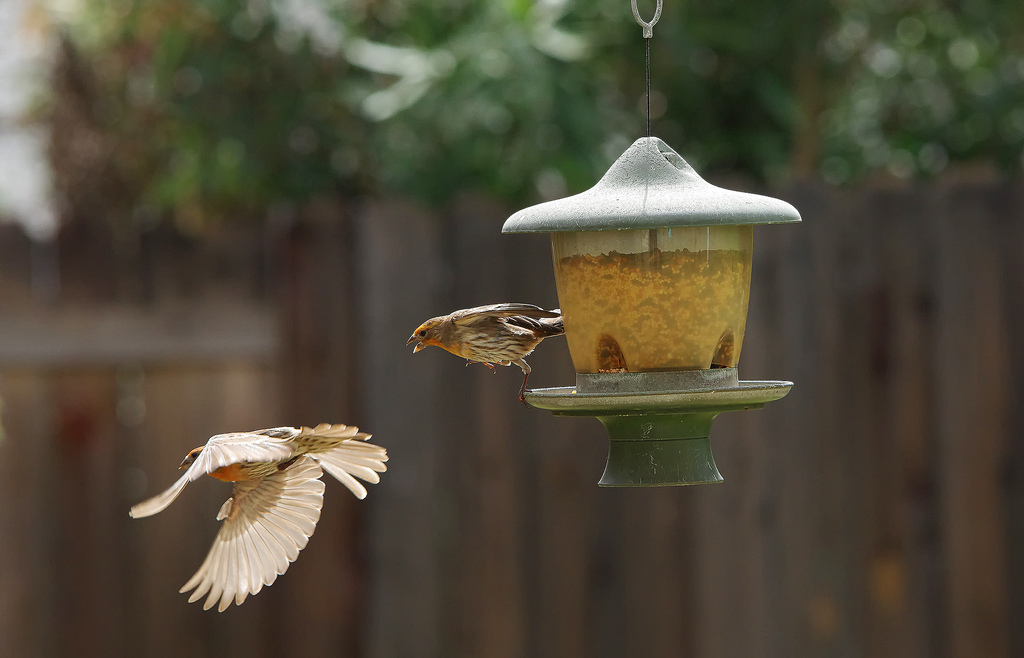Oakland reader Veronika Cole sent in this week’s Ask the Naturalist question:
I’ve started to put out bird seed for wild birds in my North Oakland backyard, and have enjoyed our visitors. Is there anything I need to know regarding whether or not it is better to keep the food out consistently, or to only occasionally put out food to encourage the birds to continue to forage on their own?
According to the Golden Gate Audubon Society the most important thing is to maintain a clean bird feeder to minimize the spread of diseases such as Salmonella.
The best way to clean a feeder is by washing it with a mild bleach solution (9 parts water to 1 part bleach) once a week. Allow the feeder to fully air dry before replacing the seed. To clean a hummingbird feeder, WildCare suggest avoiding bleach and instead scrubbing the inside of the feeder using a bottle brush and a vinegar and water solution.
It is also a good idea to bring the feeder in at night and sweep the area to avoid attracting rodents.
Providing water is another effective way of attracting bird species that may not be drawn to the seed or food you provide. Birds particularly enjoy running water so a small fountain is a good option. A shallow dish or bird bath also works, but be sure to clean it weekly using the same bleach and water solution used to clean a bird feeder.
To attract birds more naturally, the Cornell Lab of Ornithology suggests “birdscaping” your yard by planting native plant species that provide a natural food, shelter and nesting source. You can also provide shelter by installing nesting boxes.
Golden Gate Audubon Society says the frequency of providing food to birds doesn’t really matter, as they will not stop foraging even with the presence of feeders. Some people, though, prefer to feed birds only during the winter when food is less abundant than the summer or spring. You may also consider putting out your bird feeder during the migration seasons as it can be a welcome stop for a migratory bird.
For more information on cleaning bird feeders, check out the Golden Gate Audubon’s blog. You may also want to get involved with the Cornell Lab of Ornithology’s citizen science project, FeederWatch.
A bird? A bug? Something strange in the natural world nearby? Ask us and we’ll find the answer!





